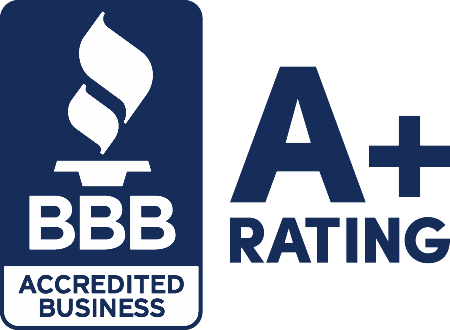What does Top Line Revenue mean in business?

Top-line revenue refers to a business’s total sales before any deductions or expenses. It is a crucial metric that showcases a company’s ability to generate income and expand its operations.
Top-line revenue is usually the first item on an income statement, also called the profit and loss or P&L statement. It sets the stage for calculating a company’s profitability. By focusing on this figure, business owners can effectively gauge their company’s financial performance.
Monitoring top-line revenue growth is essential for business owners as it provides valuable insights into their company’s overall health and success. A consistent increase in top-line revenue indicates a growing customer base and potentially higher profits.
Regularly analyzing and strategizing based on top-line revenue helps businesses make informed decisions, adapt to market changes, and sustain long-term growth. It is a fundamental aspect of financial management for all types of businesses.
What is the Bottom Line in Business?

The bottom line in business refers to the final figure, or last line, on the income statement, showing the net profit or net income remaining after deducting all expenses from total revenues. This metric essentially represents the ultimate financial outcome of a company’s operations.
For business owners, the bottom line is of immense importance as it serves as a key indicator of their company’s overall financial performance and profitability. Some consider it the most important part of the P&L statement. By analyzing the bottom line, owners can assess whether their business generates profits or incurs losses.
Monitoring and enhancing the bottom line is critical for small businesses. This involves implementing strategies such as effective cost management, optimizing operations for efficiency, and boosting sales figures. Companies can drive higher profits and sustainable growth by focusing on improving the bottom line.
What’s the difference between the Top Line vs Bottom Line?

The income statement’s top and bottom lines are arguably the two most important financial metrics to know. Let’s examine the critical differences between them and what insights they provide.
Gross Revenue vs Net Profit
The top line on an income statement refers to gross revenue, representing the total amount of money generated from sales and services. On the other hand, the bottom line signifies net profit or income after all expenses have been deducted.
Calculating The Top Line
Businesses calculate the gross revenue by adding up all the revenue generated from sales of goods or services. This figure represents the total amount of money coming into the business before any deductions are made for expenses.
Gross revenue is a crucial indicator of a company’s ability to generate income and grow its business. Accurately tracking and reporting gross revenue is essential for businesses to understand their financial performance and make informed decisions.
Calculating The Bottom Line
Businesses calculate the income statement’s bottom line by taking the total revenue generated and subtracting all expenses incurred during a specific period. This includes costs such as cost of goods sold (COGS), operating expenses, taxes, interest payments, and any other expenditures necessary to run the business.
The resulting figure represents the net income or profit that the company has made after all expenses have been accounted for. This bottom-line figure is crucial for evaluating a business’s financial health and performance.
How can my business improve Top Line Growth?

Businesses can implement various strategies to enhance top-line growth. Here are some ways to boost your business’s gross revenue.
Strategic Pricing Strategies: One fundamental approach is to adjust pricing strategies strategically. By setting prices effectively, companies can increase their gross revenues without compromising profitability.
Market Exploration for Customer Expansion: Exploring new markets and expanding the customer base is another crucial tactic to drive sales growth. Businesses can unlock new revenue streams and broaden their market presence by reaching out to untapped demographics or regions.
Investment in Marketing Campaigns: Investing in marketing and advertising campaigns is vital in boosting brand visibility and attracting more customers. These initiatives help create awareness about products or services, ultimately leading to an uptick in sales and revenue generation.
Product Offering Analysis for Optimization: Continuous analysis and optimization of product offerings are essential to meet evolving market demands effectively. By staying attuned to consumer preferences and trends, businesses can tailor their products to maximize appeal and drive revenues.
Pros & Cons of Adjusting Pricing Strategies
Pros:
- Increased revenue potential.
- Ability to attract price-sensitive customers.
- Flexibility to respond to market changes.
- Opportunity to differentiate from competitors.
- Improved profit margins.
Cons:
- Potential customer confusion.
- Risk of devaluing products or services.
- Negative impact on brand perception.
- Difficulty in predicting long-term effects.
- Possibility of alienating loyal customers.
How can my business improve Bottom Line Growth?

Here are some ways to potentially increase bottom-line growth.
Cost-Cutting Measures: Implementing cost-cutting measures is crucial for boosting net profit margins and enhancing the bottom line. By reducing unnecessary expenses, businesses can increase their profitability significantly.
Diversification of Revenue Streams: Diversifying revenue streams is another effective strategy to enhance bottom-line growth. Companies can mitigate risks by expanding into new markets, offering additional products/services, and ensuring sustainable revenue growth.
Pricing Strategy Optimization: Analyzing and optimizing pricing strategies is essential to maximizing profits and improving the bottom line. Understanding customer behavior and market trends helps set competitive prices that drive sales while maintaining healthy profit margins.
Technology and Automation Investments: Investing in technology and automation is vital in improving operational efficiency and reducing costs, ultimately contributing to bottom-line growth. Automation streamlines processes, minimizes human errors, and enhances productivity, leading to increased profitability.
Frequently Asked Questions

Here are the most common questions about the top line vs bottom line.
What other information is included on the Income Statement?
As mentioned, the top line of the income statement represents gross revenue, while the bottom line represents net profit. Here’s a list of other factors included on the income statement to help businesses get from the top to the bottom figures.
Gross Revenues: The top line.
Cost of Goods Sold: Cost of goods sold (COGS) represents the direct costs associated with producing goods or services that a business sells. These costs typically include materials, labor, and overhead expenses directly related to production.
Gross Profit: Businesses calculate gross profit by subtracting the cost of goods sold from total revenue. It represents the money a company makes from its core business operations before deducting other expenses. Essentially, gross profit shows how efficiently a company produces and sells its products or services.
Operating Expenses: Operating expenses are costs incurred from normal business operations, such as rent, utilities, salaries, and advertising. These expenses are essential for running a company’s day-to-day activities. Monitoring and managing operating expenses is crucial for maintaining profitability and efficiency in a business.
Operating Income: Operating income, also known as operating profit, measures a company’s profitability from its core business operations. It is calculated by subtracting operating expenses from gross profit. Operating income does not include interest income, interest expenses, or taxes.
Business Taxes: Taxes on a business income statement refer to the amount of money the company owes to the government based on its taxable income. This includes federal, state, and local taxes that the business must pay.
Interest Payments: The amount of money the company has paid in interest on its debts during a specific period. These payments are typically listed as an expense on the income statement, reducing the company’s overall profit. Monitoring interest payments is crucial for assessing the business’s financial health and managing its debt obligations effectively.
Other Income/Expenses: Any income from business activities unrelated to sales, such as interest on investment or atypical expenses unique to your business.
Net Income: The bottom line.
What other financial documents should I know?
While the income statement is crucial, there are other essential financial statements that measure a business’s performance.
Balance Sheet: A balance sheet is a financial statement that provides a snapshot of a company’s assets, liabilities, and owner’s or shareholders’ equity at a specific point in time. It shows what a company owns (assets), what it owes (liabilities), and the difference between the two (shareholders’ equity). This document helps investors and analysts assess a company’s financial health and ability to meet its obligations.
cash flow statement: The cash flow statement is a financial document showing the inflows and outflows of cash within a business over a specific period. It provides insight into how the company generates and uses cash, helping stakeholders understand its liquidity and ability to meet financial obligations. The statement is divided into three main sections: operating activities, investing activities, and financing activities.
accounts receivable Aging Report: The accounts receivable aging report is a financial document that categorizes outstanding customer invoices based on how long they have been unpaid. It provides a snapshot of the company’s accounts receivable balance and helps identify overdue payments that may require follow-up actions. Businesses can better manage their cash flow and collections process by analyzing this report.
Budget Statement: A budget statement is a financial document that outlines planned income and expenses for a specific period, typically monthly or annually. It helps businesses track their financial performance, identify areas for improvement, and make informed decisions about spending and saving.
Is the Top or Bottom Line more important?
While both are essential, the bottom line typically holds greater significance as it reflects a company’s actual profits. Prioritizing profitability ensures financial stability, supports reinvestment opportunities, and sustains long-term success in competitive markets.
However, prioritizing between the top and bottom lines depends on the business’s goals and current financial situation. For example, companies may prioritize cost-cutting measures to ensure financial stability during economic uncertainty.
Ultimately, balancing top-line growth and bottom-line improvement is essential for long-term success. Companies must focus on both aspects to ensure sustainable profitability and overall financial health.
Top Line vs Bottom Line – Final Thoughts

Focusing on both the top and bottom line is crucial for overall success. Improving your top-line revenue can increase your business’s scale and reach while enhancing your bottom line can ensure profitability and sustainability.
By optimizing both, you create a well-rounded and prosperous business model. To elevate your business further, analyze your financial statements regularly, identify areas for improvement, and implement strategies to enhance both top-line and bottom-line growth.
Contact us if you have more questions about top line vs bottom line or to apply for a small business loan. Our alternative financing experts can help you find the best funding options for your business goal.













